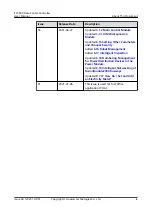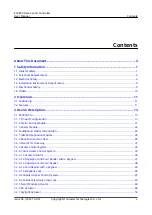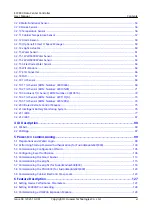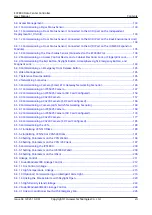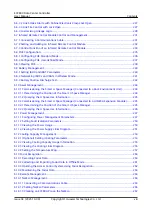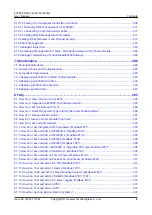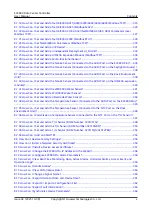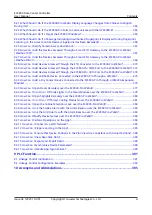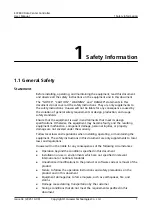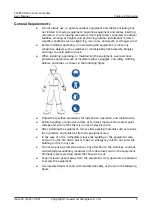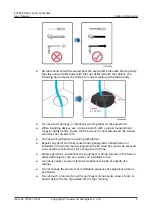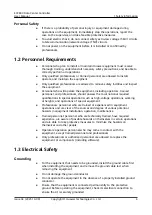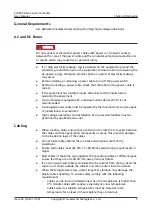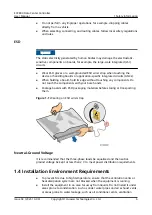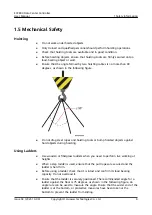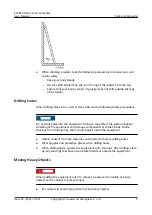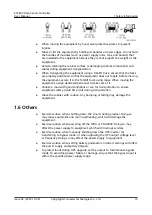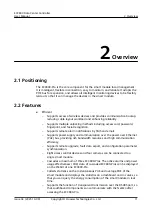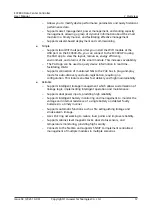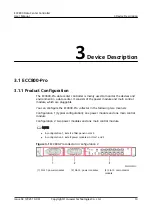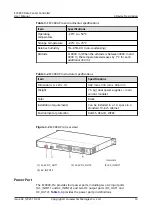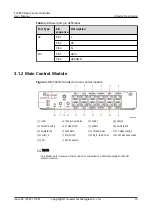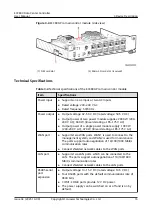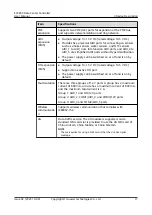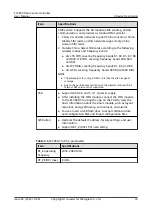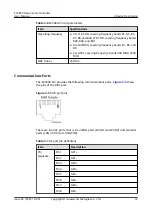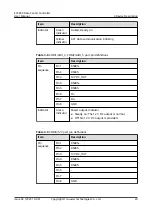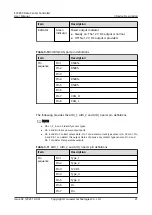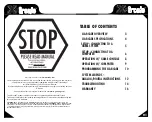
vents, or feeder windows of the equipment room. Ensure that no liquid enters
the equipment to prevent faults or short circuits.
●
If any liquid is detected inside the equipment, immediately disconnect the
power supply and contact the administrator.
●
Do not expose the equipment to flammable or explosive gas or smoke. Do
not perform any operation on the equipment in such environments.
●
Ensure that the equipment room provides good heat insulation, and the walls
and floor are dampproof.
●
Install a rat guard at the door of the equipment room.
Installation at Heights
●
Working at heights refers to operations that are performed at least 2 meters
above the ground.
●
Do not work at heights if the steel pipes are wet or other potential danger
exists. After the preceding conditions no longer exist, the safety director and
relevant technical personnel need to check the involved equipment. Operators
can begin working only after obtaining consent.
●
When working at heights, comply with local relevant laws and regulations.
●
Only trained and qualified personnel are allowed to work at heights.
●
Before working at heights, check the climbing tools and safety gears such as
safety helmets, safety belts, ladders, springboards, scaffolding, and lifting
equipment. If they do not meet the requirements, take corrective measures or
disallow working at heights.
●
Wear personal protective equipment such as the safety helmet and safety belt
or waist rope and fasten it to a solid structure. Do not mount it on an
insecure moveable object or metal object with sharp edges. Make sure that
the hooks will not slide off.
●
Set a restricted area and eye-catching signs for working at heights to warn
away irrelevant personnel.
●
Carry the operation machinery and tools properly to prevent them from
falling off and causing injuries.
●
Personnel involving working at heights are not allowed to throw objects from
the height to the ground, or vice versa. Objects should be transported by
tough slings, hanging baskets, highline trolleys, or cranes.
●
Ensure that guard rails and warning signs are set at the edges and openings
of the area involving working at heights to prevent falls.
●
Do not pile up scaffolding, springboards, or other sundries on the ground
under the area involving working at heights. Do not allow people to stay or
pass under the area involving working at heights.
●
Inspect the scaffolding, springboards, and workbenches used for working at
heights in advance to ensure that their structures are solid and not
overloaded.
●
Any violations must be promptly pointed out by the site manager or safety
supervisor and the involved personnel should be prompted for correction.
Personnel who fail to stop violations will be forbidden from working.
ECC800 Data Center Controller
User Manual
1 Safety Information
Issue 04 (2021-10-09)
Copyright © Huawei Technologies Co., Ltd.
7

